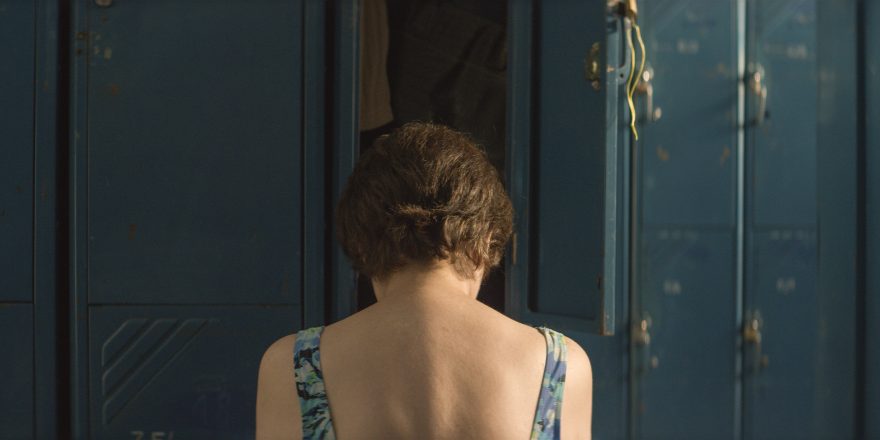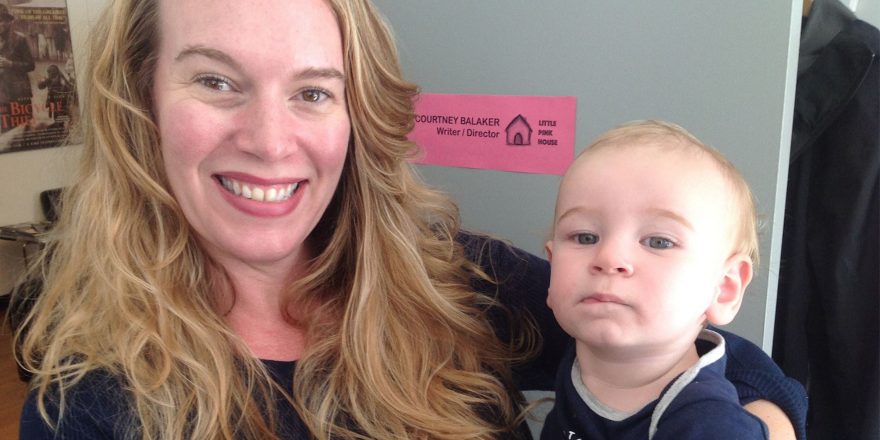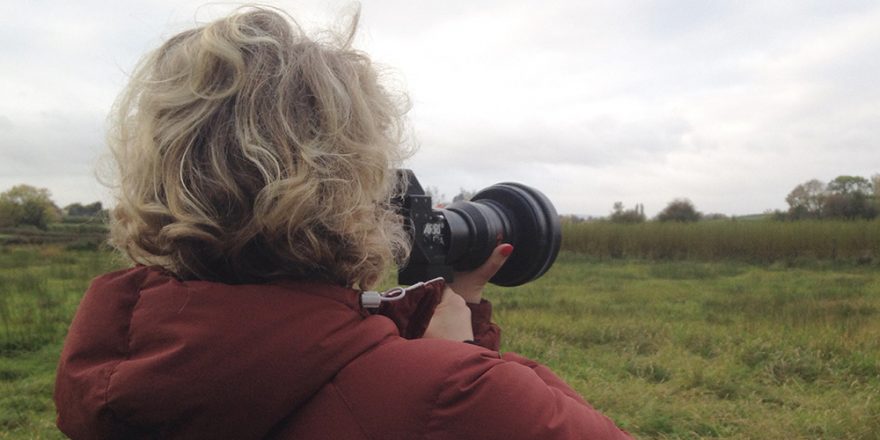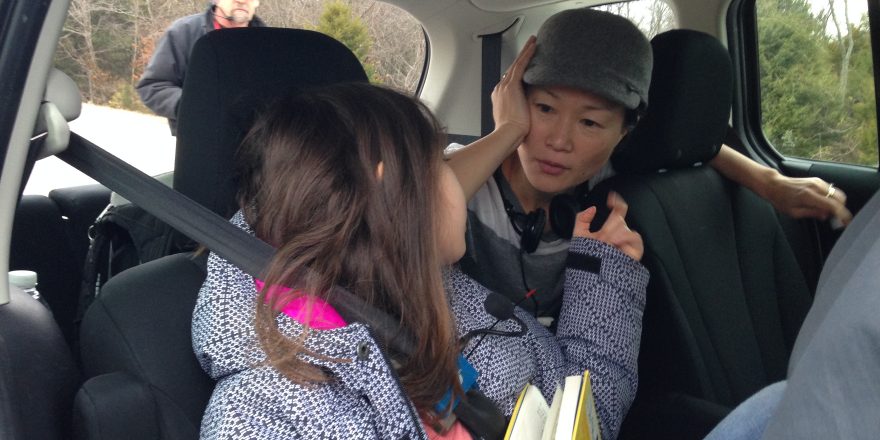Doña Flor’s most distinguishing trait is her flesh-colored stockings. It’s an image I’ve carried with me since early childhood. I am sitting on the beige carpeted floor in my grandmother’s mirror-covered dressing area. She is standing there in multiple reflections, wearing nude nylon from chest to toe – her bra, girdle, stockings all squeezing her tightly together …
My film Todo lo demás (Everything Else) is an homage to those women who endured a lifetime in flesh-colored undergarments; the nylon making their real skin invisible to the world. It is challenging to make a film in which the main character’s primary characteristic is nude nylons. There is nothing sexy about it. And that was precisely the point. I wanted this to be a film about a woman in her sixties who is not a mother, wife, lover or prostitute – nor striving to become any of those things. I hope that a reference for such a character in cinema already exists, but I have not myself encountered it. Pitching to male producers and financiers a film about a 63-year-old female bureaucrat in which “nothing happens” was not easy. Even Jeanne Dielman is a prostitute who at the end of the movie murders her client. But thanks to Jeanne Dielman, I could imagine Doña Flor.
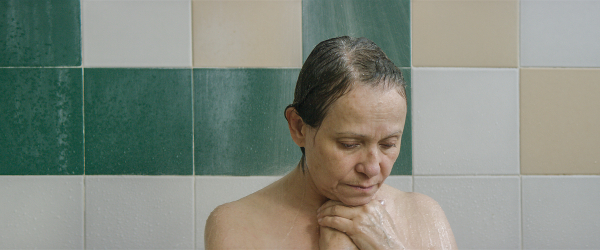
Doña Flor is rendered invisible not only by her stockings but also by the bureaucratic system in which she has been working her whole life. She is the quintessential cog in the machine, one of the many women who spend their lives sitting behind a desk. I realized that even I failed to see these women when I encountered them in the locker room at the pool in Mexico City that belonged to the Mexican government’s department of taxation. Most of the women there were retired bureaucrats, but I could not reconcile in my head that desk-bound workers with zero autonomy could also be the women I saw in the locker room, so fleshy and animated.
I filmed at this pool with the same women who inspired Everything Else. It is the place where Doña Flor loses her invisibility and is seen. When we were filming, the women agreed to shower as they usually would as long as I – one of the few women on the crew – was the only person in the room with them. (One of my regrets about this production is the sad irony that my film about a woman was made with a predominantly male crew.) We set up the camera, everyone cleared out except for me, and the women undressed. They knew, of course, that in the room next door the entire crew was watching on a monitor and that the film would be projected in cinemas, yet the only thing which mattered was who saw them there in the flesh.
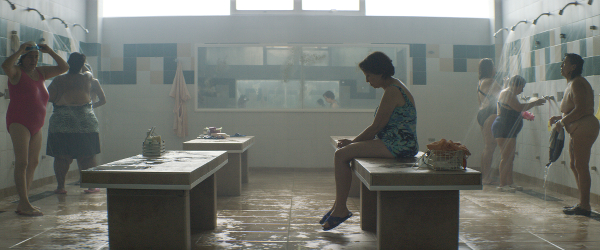
While I was writing Everything Else, I spent a lot of time riding the women’s car in Mexico City. In Mexico City, the last two subway cars are reserved for women and children. These train cars provide a safer place for women to ride, where they are not subjected to men’s groping and obscenities. I opt to ride in the women’s car whenever possible, and yet I find that it is a perfect example of how sexism operates. The existence of the car essentially condones men’s behavior as inevitable and natural, and so separates women from men – because a woman who rides in the communal car is “asking for it,” and thus is to blame for any abuse she experiences. Men are never held accountable.
I wanted the women’s car to be a central location in the film because it is a portrait of Mexico City’s working-class women. I had an image in my mind of these cars disappearing down the dark subway tunnels, never to reemerge into the light, and no one noticing that they’d disappeared. Just like the femicides in Mexico that continue to go unpunished, despite having claimed the lives of over 50,000 women since 1985.
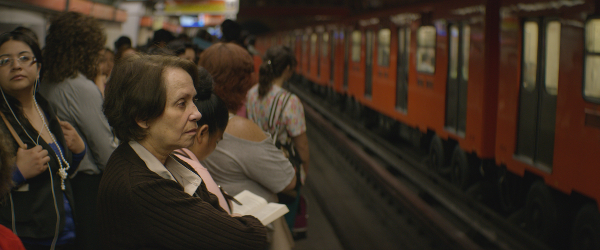
The first day we filmed in the women’s car, during rush hour with a mostly male crew, is not one I look back on fondly. I’d discussed with my A.D. that we were to have a minimal crew for the subway shoots, but when I arrived on set there must have been 18 people lingering in the walkways looking as only lingering film crews can. I was infuriated that my directions had not been followed and I felt – no, I knew – that I was being undermined precisely because I was a woman. Although I’d made three feature documentaries, much of my crew saw me as a first-time director who didn’t know what she was doing. It felt nearly impossible to challenge any of the norms of fiction filmmaking to work how I had as a documentarian, yet I knew that this was essential – especially in the subway, where we were basically inserting our actress into a documentary production. It is very difficult to quantify why these subtle and not-so-subtle forms of disrespect are so damaging. It is perhaps easier to see and understand blatant sexual abuses as sexist, but the more subtle ways in which women are undermined and disempowered also prohibit us from being equal players.
I sometimes forget that I made Everything Else while also trying to get pregnant. From the time we were trying to raise financing, I spent endless hours looking at the calendar trying to calculate not only my film’s production schedule but also my ovulation / pregnancy production schedule, hoping I could manage both before I turned 40. It is surprising how little control we actually have over either form of creativity. I got pregnant after only three months of trying in 2014, as we were locking down the production schedule while applying for a big Mexican grant. I didn’t want to tell anyone so early on, but the six-week shoot was lining up perfectly with the end of my pregnancy. So I felt obligated to speak up, since I knew I couldn’t shoot a film during my last trimester. I was working with a production company made up entirely of men, one of whom warmly laughed and said each of his three children had been born while he was making a film. … The company adjusted the production schedule to work with my pregnancy, but at 10 weeks I miscarried. And we didn’t manage to submit the film for that grant cycle anyway. I felt so ashamed and like such a failure. The fear that I’d never manage to have a baby or make this film was overwhelming.
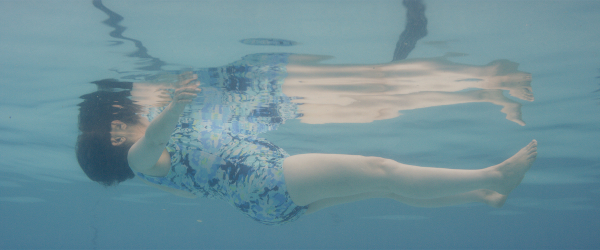
Now that I think back on that time, it strikes me how similar the creative drive and the maternal drive felt to me. The monthly disappointment of my period was so similar to the disappointment of not getting a grant or not getting into a festival. Spending thousands of dollars on an IVF cycle that very well might not work, and yet feeling that it was an absolutely necessary gamble, was so similar to the feeling I’ve had making my films. In the moment, my whole sense of self and my future felt wrapped up in my ability to achieve these two things. In the end, I was lucky. My son Gray was born October 1, 2016, and the film premiered at the New York Film Festival, and played at festivals in Rome, Rio, Mumbai and Morelia that same month. Now, as I write this, I am seven months pregnant with our second child, flying to New York for the theatrical release of Everything Else and feeling ready for number two and another film.


